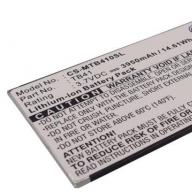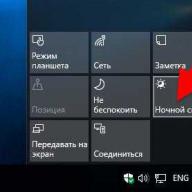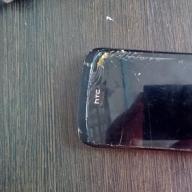HP brand printers are among the most popular among ordinary PC owners. HP printers have gained great popularity due to their ease of use and excellent print quality. But, unfortunately, some users cannot install the driver for a new printer, and most often this happens with the hp laserjet 1010 model. Therefore, in this article you will learn how to install the hp laserjet 1010 printer on Windows 7.
Method for installing hp laserjet 1010 on windows 7 No. 1
Since there are no drivers for the hp laserjet 1010 printer on Windows 7 on the official HP website, you can try installing drivers from the Windows Vista operating system.
To do this, open any search engine on the Internet, for example Yandex, and enter “hp laserjet 1010” without quotes in the search bar.
Go to the official website of the HP 1010 printer
Select the site with the name “HP LaserJet 1010 Series Printer Drivers and Downloads” in the search results.
After this, you are taken to the official website of the HP manufacturer, and specifically to the HP LaserJet 1010 model page.

Select the section with drivers
Click the “Go” button under the words “Go directly to software and drivers.”

Selecting the operating system version

Download the driver for HP 1010
After downloading the archive with the driver, unpack it.

unpack the downloaded driver
Now we check that the printer is plugged in and connected with a cable to the USB port of the computer or laptop to which it needs to be connected.
We launch the device manager using any known method, for example, by right-clicking on the “Computer” icon on the desktop or in the start menu and selecting “Device Manager” in the window that opens on the left.

Go to the task manager and find the connected HP 1010 printer
You need to find the printer in this list. It may not necessarily be called HP LaserJet 1010. But its icon will definitely have a question mark or an exclamation mark.
Right-click on it and select “Update Drivers”.

Updating the driver
In the window that opens, select “Search for drivers on this computer.”

Specify the folder with the unpacked HP 1010 driver
After selecting the folder with the unpacked driver, click the “Next” button to begin the HP LaserJet 1010 installation process on Windows 7.

We complete the installation of the HP 1010 printer on Windows 7
After a few seconds, the printer should be installed with a corresponding message displayed. Restart the computer and use the printer.
If you have any difficulties during the process of installing the HP LaserJet 1010 using this method, then proceed to method No. 2.
Method for installing hp laserjet 1010 on windows 7 No. 2
The main and only reason why the hp1010 printer does not start on Windows 7 is that this model was released back in the days of Windows XP. Therefore, by installing inappropriate drivers for this printer on the seventh version, the computer may begin to produce various errors.
Even after many years, the developers have not released drivers for the new Windows.
But you can fix the problem by doing the following:
Connect the hp1010 printer to your PC using a USB cable and turn it on.

Go to devices and printers
On the page that opens, you need to click on the “Install a printer” button and then click on the “Add a local printer” line.

Select “Printer Installation”

Adding a local printer
Now you need to create a default port. To do this, set the switch to the “Create a new port” position, select the “Local port” type and click the “Next” button.

We create a port DOT4_001 for it
After this, you need to enter the name “DOT4_001” (without quotes) and click “OK”.
If a message appears stating that the DOT4_001 port is busy, you need to set the switch to the “Use an existing port and select DOT4_001 from the list” position.
After this, a page will appear in which you need to specify the printer model and manufacturer to install the appropriate driver. In our case, the manufacturer is HP and the model is HP LJ 3055 PCL5. Why this particular model? The fact is that it is the driver from HP 3055 that is ideal for your printer, while the others do not support hp1010 or will produce a bunch of errors.

Selecting HP manufacturer and HP LJ 3055 PCL5 printer
Installing the driver may take some time, depending largely on the speed of the Internet and the power of the PC. During the installation process, the system will ask you to specify the name of the printer, you can write anything, but to avoid confusion, enter the name “HP LJ 1010”.
After this, restart your PC and try to turn on the printer, it will start if everything was done correctly.
HP LaserJet 1010
Windows 2003/2008/2012/XP/Vista/7/8/8.1/10 - universal driver
You can use a special program from HP, with which you can automatically find the driver you need. .
Windows Vista/7/8/8.1/10
Size: 14.2 MB (x32) and 19.9 MB (x64)
Bit depth: 32/64
Links:
- for x32 - HP LaserJet 1010-windows 32bit
- for x64 - HP LaserJet 1010-windows 64bit
To download the required driver, there is a description below at the very beginning of the article on how you can see the system bit depth.
Windows Vista/7/8/8.1/10
For Windows 10 x64 and other systems (need to be checked), you can use the basic HP LaserJet 2200 driver. To do this, read the instructions below. When you select a printer, select HP LaserJet 2200 Series PCL5 or HP LaserJet 3055. Perhaps this option will help you in resolving the issue of installing the driver.
Installing the driver on Windows 10
The instructions will be written using Windows 10 as an example; if you have Windows 7, then at the very end of the article there is a video that will help you. To install the driver on the HP LaserJet 1010, you will need an archiver (it is most likely already installed on your computer, so there will be no problems). Next, the required bit capacity of the system is determined. To find out, you need to right-click on the “Computer” shortcut and select “Properties” from the list.

If there is no shortcut on the desktop, then a search is performed in the Start menu. Open it and start entering the search word. When “This PC” appears in the list, right-click on it and select “Properties”.

The “System” window opens. In this window, the section we are interested in is called “System Type”. In the image below, the mouse cursor is hovering over it. The first 2 digits indicate the system capacity. There are only 2 options: x64 and x32. The driver is selected according to the bit depth. Any other one simply won't do.

After completing the download, use the archiver to unpack the files. You should remember the unpacking path - it will come in handy below. If you don't have an archiver, you can. It is perfect for this task. Having completed the preparation, we proceed to installing the driver. This is done manually. Open the Start menu and start typing the word “Panel”. When the system suggests “Control Panel” as the desired option, open this application.

We are looking for the “equipment and sound” section. It has a sub-item “View devices and printers” (highlighted by the mouse cursor in the image below). We click on it.

In the “Devices and Printers” window, click on the “Add Printer” button. The most difficult and exciting part begins.

We skip the process of searching for printers. This is a very long and tedious action that has a low probability of being detected by the printer. But this won’t give us anything. It’s much quicker to click “The printer you need is not in the list.” Saves up to 5 minutes.

Mark the last item, as shown in the following image and click “next”.

We do not change anything in these settings. These will be empty and useless actions. The printer will determine the port automatically when the installation is complete. Click “Next”.

Here is a list of manufacturers and devices. The ones you are looking for are not there. You shouldn't count on luck. Click “Install from disk...”. This does not mean a CD-ROM, but a computer hard drive. After all, we have already downloaded and unpacked the driver files in advance.

Click on “Browse” and go to the folder with the unpacked files in Explorer.

Select the only file in this folder. Since it is sorted by .inf format, other files will not be displayed. Click “Open”. Your file name will be with the numbers “1010”.

The path is determined. The file we specified contains installation information. Click “Ok”.

The last manual stage. Now you need to select which device driver to install. Click on HP LaserJet 1010 HB (as shown in the image), and then click “Next”.

The user is prompted to enter the name of the printer, which will be displayed in the system and when sending files for printing. There is no need to change anything. Click “Next” and wait for the installation to complete. The procedure is extremely fast. The unpacked files are directly copied to the required OS directories.

Once complete, you can print a test page.

Clicking the "Finish" button completes the installation process. Once the printer is connected, you can use it.
If you can’t print, watch the video and do another installation option:
HP LaserJet 1010
Windows 2003 / 2008 / 2012 / XP / Vista / 7 / 8 / 8.1 / 10 - universal driver
For the above systems, you can install a universal driver from HP.
Bit options: x32/x64
Driver size: 14 MB (x32) and 20 MB (x64)
Below we have prepared instructions that will allow you to install the HP LaserJet 1010 driver. But if you have problems installing this driver option, you can use other options - HP LaserJet 2200 Series PCL5 or HP LaserJet 3055. You must manually install the basic driver and select 2 previously listed drivers to choose from.
Windows Vista / 7 / 8 / 8.1 / 10
Bit options: x32
Driver size: 1 MB
How to install driver on Windows 10
A significant difficulty when using HP office equipment is the initial setup process. The instructions given by the manufacturer are most often formal and difficult to understand, so users often make mistakes that lead to loss of equipment performance. We have prepared a detailed step-by-step algorithm that will help you avoid mistakes when installing new devices.
The first thing you need to do is download the drivers for the HP LaserJet 1010 printer, which are available for download via the hyperlinks published at the top of this page. You can also try searching for this distribution on the official website in the “Technical Support” section. The most important thing about this step is that you will need to unpack the driver files, which will be archived after downloading. We recommend using the free 7ZIP utility for this. You can also unpack the folder using the standard Windows utility.
Now we move on to determining the information on the bit depth of the operating system of our device. We look for the “My Computer” icon on the desktop and select its “Properties”.
If for some reason there is no such icon (for example, it was deleted), then open the search bar (it is located next to the “Start” menu) and enter “My Computer” there. Now we call its properties. A window will open containing all the data about the operating system being used. We are interested in the line “System type”. We remember this data.
Now we go to the “Control Panel” option, from where we will install and configure the printer. Enter “Control Panel” into the search bar. Next, among the set of icons for setting up your computer, select “Hardware and Sound”, where we are interested in the link “View devices and printers” - click on it.
The system will show us a list of all previously installed printers, but we are interested in the “Add Printer” icon at the top. Let's click on it.
The installation wizard will immediately begin to automatically search for printers that have been connected to the computer but not installed. We don’t wait for this operation to complete and immediately click the link “The printer you need is not in the list.”
In the window that opens, select the option “Add a local or network printer with parameters specified manually.” Place a check mark next to it and click “Next”.
Now we check the port settings for connecting the printing device. There should be a checkmark next to “Use an existing port”, and the port itself should be selected as “LTP1: (Printer Port)”. After this, you can click “Next”.
The selected LTP1 port may not suit you, and therefore, if the printer does not work, select DOT4_001 from the list.
The system will redirect to a list of available driver files for printers - here you don’t need to select any, just click the “Have from disk” button.
The installation wizard will prompt you to insert the driver disc, click “Browse”.
Now select the file called “hpc1015c” inside the files that we unzipped at the very beginning of the instructions. After that, click “Open”.
Now you must select the printer to install on your computer - HP LaserJet 1010 HB.
After that, click "OK".
There are very few steps left - one of them is to enter a name for our printer (it can be anything). After that, click “Next”.

A driver is essentially a link between the operating system, that is, software and hardware, that is, physical devices such as video cards, printers, processors, etc. The operating system may contain basic drivers for the most necessary devices - mouse, keyboard, but everything else will require fresh drivers.
How to install the driver?
1. The easiest way, if there is an installation file, then you just need to run it and follow the installer’s instructions.2.If there is no installer available, and there are only files with the extensions *.inf, *.dll, *.vxt, *.sys, *.drv., then the algorithm of actions should be approximately as follows:
a) First you need to select the icon ( My computer) and right-click on it, select ( Properties).
b) Now go to the tab ( Equipment) and presses the button ( device Manager).

c) Now you need to select the device for which the driver will be installed/updated. On the line with the device, you need to right-click and select ( Properties), or you can simply double-click on it to go to the desired settings. 
d) Go to the tab ( Driver), select the button ( Update).

e) In the dialog box that appears, select the item ( No, not this time) and go to ( Further).
f) At this stage there are two options. You can try to install drivers automatically, then the OS itself will try to find drivers suitable for the device and install them, for this we select ( Automatic installation (recommended)) , if the attempt fails, then you need to move on to the second point ( Installation from a specified location) and select ( Further).

g) This menu item implies a choice between searching for a driver on removable media and the option to specify the folder with the driver yourself. Therefore, if you have a disk with drivers, you need to insert the disk into the CD-rom and select the option ( Search on removable media (floppy disks, CDs...)) and go ( Further).
If the driver is found and downloaded on the Internet yourself, then you need to manually specify the path to the folder in which the installation data for the driver is located as follows. Select the item ( Include the following search location:) and go to ( Review), now select the folder with the driver from the list and click on the button ( OK). Now we boldly move on ( Further), if everything is done correctly, the installation of the necessary driver will begin. 




